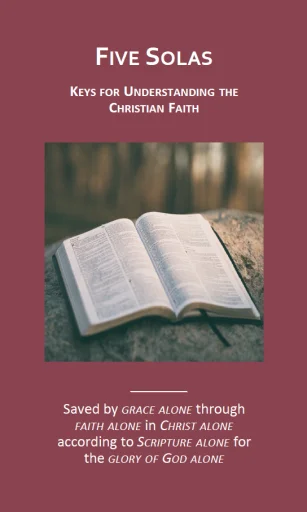This year at our Iowa State Fair gospel outreach booth our theme will be the creation or origin of time. We love to share the gospel and glorify God in all of His creation and we love to use creation evangelism as a means to explain the gospel. Here are a few questions and talking points to guide you in your conversations at our booth.
Theme Verse: Genesis 1:14 – And God said, “Let there be lights in the expanse of the heavens to separate the day from the night. And let them be for signs and for seasons, and for days and years,”
Summary: God created everything, even time. On Day 4 of Creation week, he gave the sun, moon, and stars, and we mark time by them. Our day is measured by a complete turn of the earth on its axis, giving us both day and night. Our year is measured by a complete orbit around the sun. Our seasons are marked by the solstice and equinox. It is amazing that God went to such a great extent to give us light, and time, yet He is outside of time.
History is a product of time and we can converse with people about history with the context and framework of The 7 Cs of History. We will have many resources available for this.
Q: What time-related words do we find in Genesis 1?
A: There are several: “beginning”, “there was evening and there was morning”, “the [first] day”, “seasons”, “days”, “years”, also many words indicating verb-tense.
Q: What is solstice and equinox?
A: Our earth spins on a tilted axis. As it orbits the sun, when our hemisphere is tilted closest to the sun it is summer solstice; when tilted furthest from the sun it is winter solstice. These mark the beginning of their respective seasons and the longest or shortest day-light cycle. The equinox is the time when there is equal day and night and marks the beginning of the spring and autumn seasons.
Q: What is the basis of our 7-day week, and the Sabbath?
A: We observe a 7-day work seek almost universally around the world. That is based on the 7 days of Creation as described in Genesis 1. In the 10 Commandments, God calls Israel to observe the Sabbath as a remembrance of God’s rest on day 7 (Exodus 20:11).
Q: Where did our months come from?
A: Months also had their origin in Creation with the cycle of the moon. Israel observed the lunar month, each month was marked by the new moon. The moon orbits the earth every 27.3 days and completes its cycle in 29.5 days. Today we follow a solar calendar instead, based on a complete orbit of earth around the sun.
Q: Why so much attention on the moon, and what are the meaning of the names?
A: A supermoon is when the moon appears largest because it is closest in orbit to the earth. A blue moon does not depict its color, but indicates a rare event when there are two full-moons in the same month. A blood moon does indicate its color, which happens during a lunar eclipse and refracts the light as it bends around the earth and hits the moon.
Q: How do we define the word ‘day,’ in relation to Creation and the origin of time?
A: ‘Day’, like many other words (e.g. roll) has multiple meanings. How do we determine what is meant? It is based on the context of the word in the sentence. A 24-hour day is referenced in Genesis 1 as the complete day-night cycle on each day and based on the use of an ordinal (e.g. first day). Day may also refer to the daylight portion of a day, also found in Genesis (i.e. ‘he separated the day from the night’). Day may also refer to the portion of a day, such as a 8-hour work-day. It may also be used to refer to a long period of time, such as back in my father’s day.
Q: Isn’t a day like a thousand years? (2 Peter 3:8-9)
A: Many mis-use this to allow the days of Creation to mean a long period of time rather than a normal 24-hour period. This doesn’t solve the so-called problem because it would only extend the creation week by 6,000 years rather than the millions or billions needed for evolution. It also negates itself in the same sentence. “with the Lord one day is as a thousand years, and a thousand years as one day.” It also doesn’t say that a day “is” a thousand years, but “as”, which indicates God’s perception.
Q: Is God bound by time?
A: No. Time is intertwined with space and matter (Einstein’s theory), and God was self-existing before time was created. Man changes with time, but God is the same yesterday, today, and tomorrow, He does not change (Hebrews 13:8). God “declares the end from the beginning” (Isaiah 46:10) “from ancient times things not yet done.”
Q: “from the beginning God made them male and female” Does that work with an old earth?
A: This comes from Mark 10:6. The meaning of “the beginning” must be from the beginning of Creation, showing mankind has existed for most of the time of the existence of the universe. If the earth was “old”, the beginning must refer to the beginning of mankind rather than the beginning of the universe, since in this model man has only existed for a fraction of the entire universe.
Q: How do we know the Bible is true, in relation to time?
A: The Bible is not a myth as some people claim. We can evaluate it because it is rooted in time (history), recording real people, places, and events that can be tested and validated. Archeological digs and discoveries consistently confirm the events of the Bible, although none can prove it. This is one way we can trust the Bible in comparison to many other religious texts from around the world. more info…
Q: What is the meaning of A.D. and B.C.?
A: A.D. stands for the Latin phrase “anno domini,” meaning the year of our Lord. B.C. stands for “before Christ.” Together these indicate the number of years before, or after, Christ’s life on earth. It may not mark exact year of His birth or His death but was significant enough for most of mankind to mark time periods across all of history based on their relation to Jesus, God Incarnate. This came into use around the 9th Century.
 Evolution and the Origin of Life
Evolution and the Origin of Life
 6 Ways We Lower Our View of God
6 Ways We Lower Our View of God
 Tulip: The Beauty of God’s Grace
Tulip: The Beauty of God’s Grace
 Five Solas Business Card
Five Solas Business Card